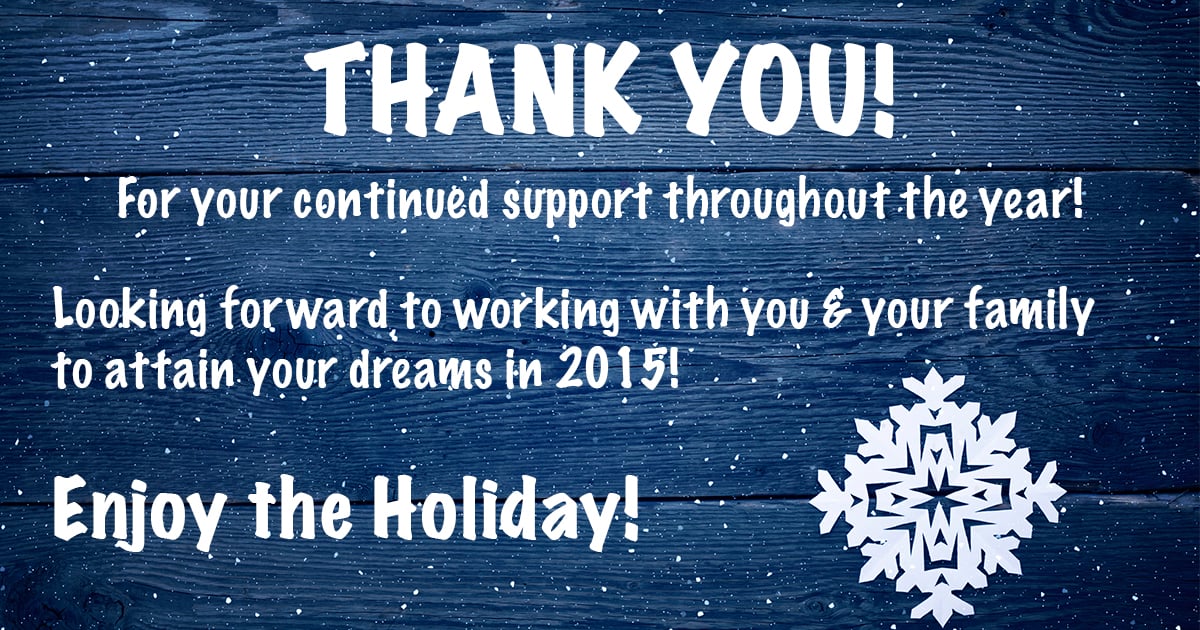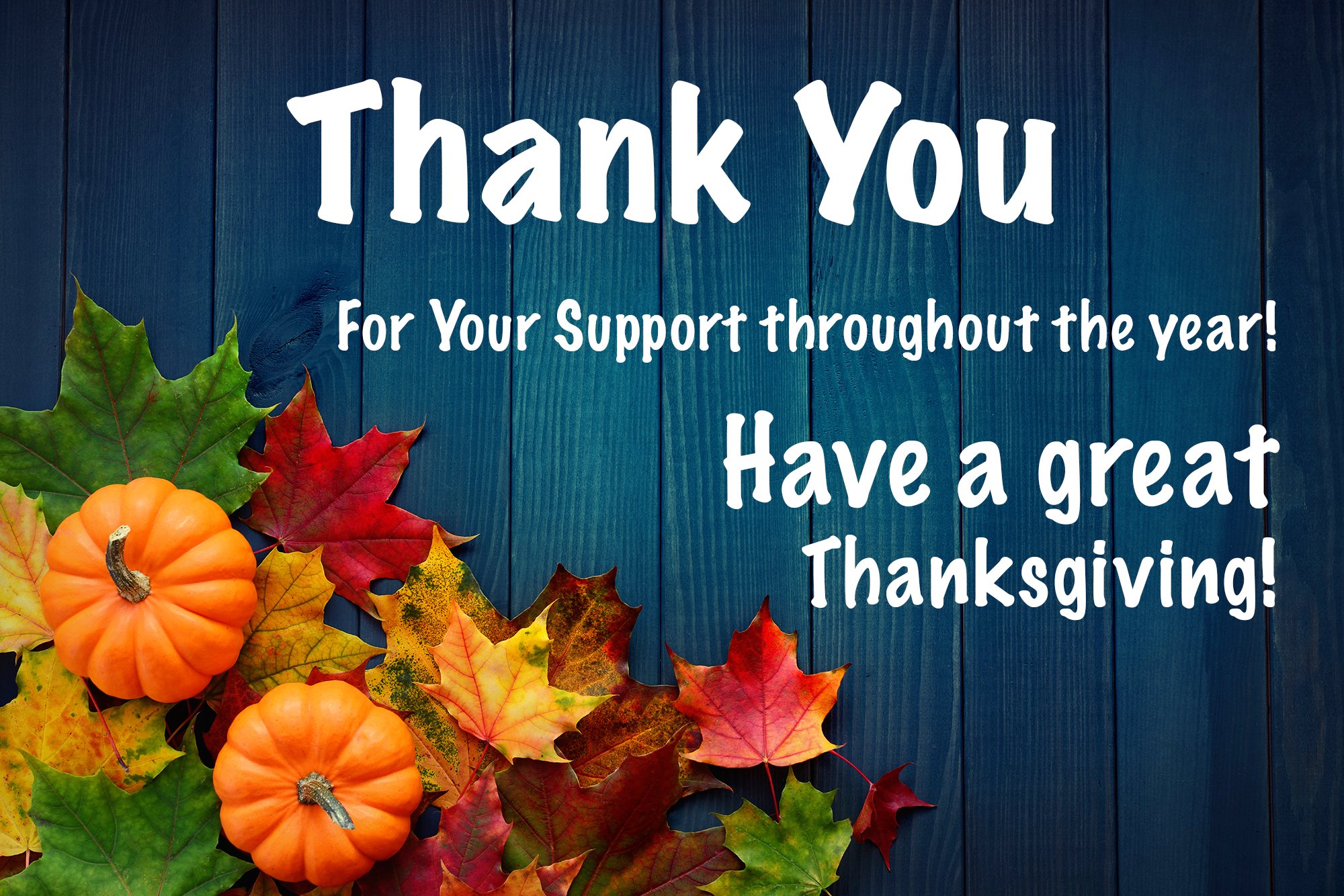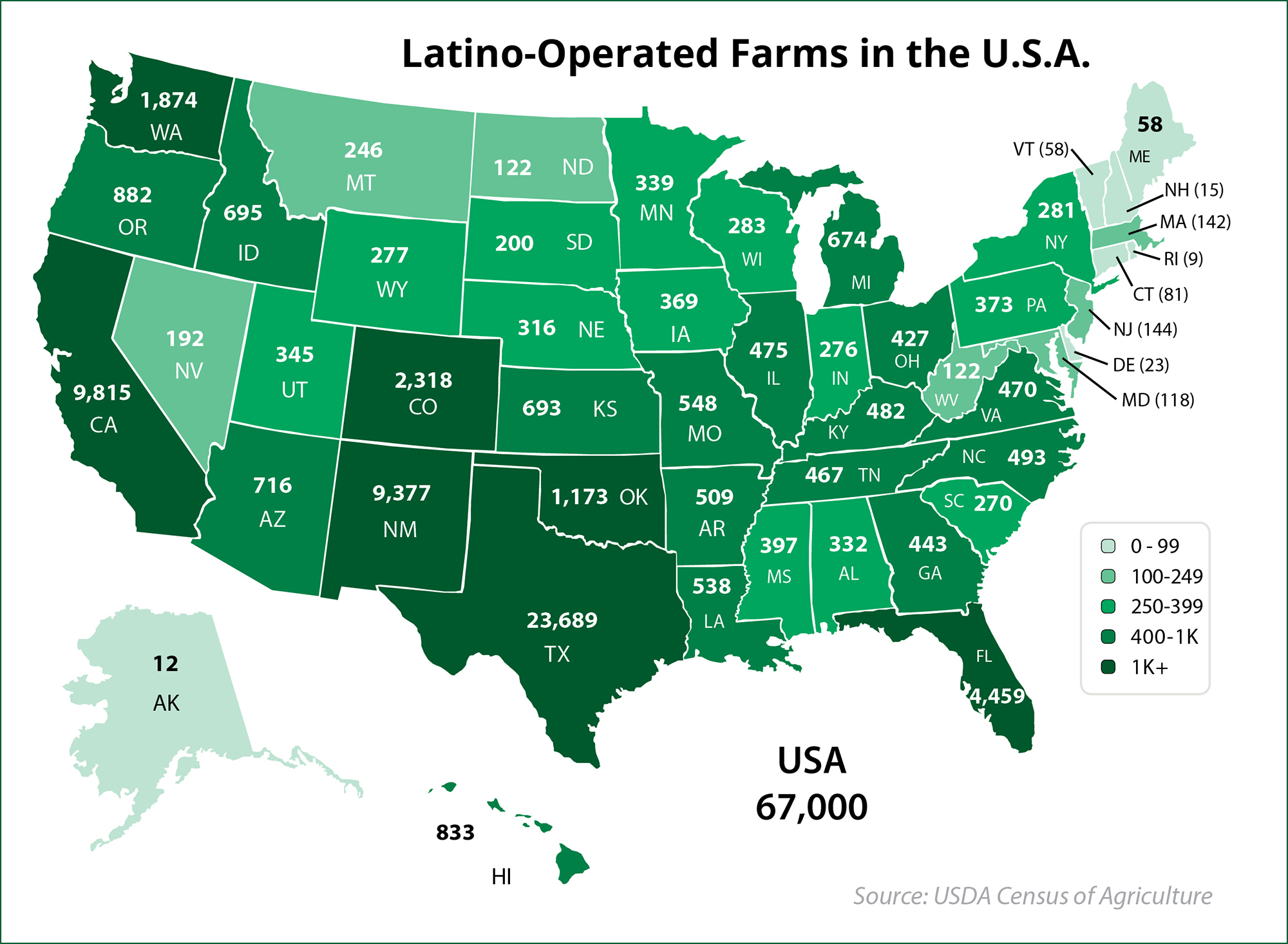Thank You for All Your Support

Thank You for Your Support!

Have a great holiday!
All Gave Some. Some Gave All.

Here's to a Wonderful 2018!
We hope 2018 is a great year for you, both personally and professionally!
Thank You for All Your Support

Thank You For Your Support!

Have a great holiday!
Thank You for Your Service!

Thank you for your service!
All Gave Some. Some Gave All.

Here’s to a Wonderful 2017!

We hope 2017 is a great year for you, both personally & professionally.
Thank You for Your Support!

Have a Great Holiday!
Thank You for Your Service!

Thank you for your service!
All Gave Some. Some Gave All.

Thank You For Your Service!

Thank you for your service!
All Gave Some. Some Gave All

Here’s to a WONDERFUL 2015!

Here's hoping 2015 is a great year for you both personally & professionally.
Thank You For Your Support!

Have a Great Holiday!

Happy Veterans Day!

Thank you for your service!
Enjoy the Weekend!

The Growth of Latino-Owned Farms in the U.S.A.
 Today we are pleased to have the VP of Spanish KCM, Jeymy Gonzalez, as our guest blogger. Jeymy has personal experience with the challenges Hispanics may face during the real estate process and works to assist this community with guidance and education. Enjoy!
A recent Fox News Latino article talks about the healthy growth of Latino-Owned farms. According with the Census of Agriculture “there has been a 21 percent increase in ownership in the last 5 years.” Most of those farms are small or mid-sized with greatest concentrations living in Texas, New Mexico and California.
The Latino-owned farms have become key providers of certain produce. The article mentioned for example; Latinos own two-thirds of the strawberry farms in California.
This increase is the result of the work of Organizations like Rural Coalition that represents small farmers and producers in the U.S. and Mexico, the recruitment efforts to bring in minority and women farmers by the USDA, and large economic forces, as NAFTA, who led new farm owners to work their way up from being laborers.
There is a great opportunity for real estate professionals who focus their business on farms and ranches. The USDA Census of agriculture published a table with the Farms with Hispanic/Latino Principal operator and The KCM Crew put it together on this map for you!
Today we are pleased to have the VP of Spanish KCM, Jeymy Gonzalez, as our guest blogger. Jeymy has personal experience with the challenges Hispanics may face during the real estate process and works to assist this community with guidance and education. Enjoy!
A recent Fox News Latino article talks about the healthy growth of Latino-Owned farms. According with the Census of Agriculture “there has been a 21 percent increase in ownership in the last 5 years.” Most of those farms are small or mid-sized with greatest concentrations living in Texas, New Mexico and California.
The Latino-owned farms have become key providers of certain produce. The article mentioned for example; Latinos own two-thirds of the strawberry farms in California.
This increase is the result of the work of Organizations like Rural Coalition that represents small farmers and producers in the U.S. and Mexico, the recruitment efforts to bring in minority and women farmers by the USDA, and large economic forces, as NAFTA, who led new farm owners to work their way up from being laborers.
There is a great opportunity for real estate professionals who focus their business on farms and ranches. The USDA Census of agriculture published a table with the Farms with Hispanic/Latino Principal operator and The KCM Crew put it together on this map for you!

You can help these Latino operators become farm owners & fulfill the American Dream!
Upscale Latinos and Housing
We are excited to have Jeymy Gonzalez as our guest blogger today. Being a first generation Hispanic immigrant, she has personal experience with the challenges Hispanics may face during the real estate process and works to assist this community with guidance and education.
 Last year Nielsen and the Association of Hispanic Advertising Agencies (AHAA) identified Upscale Latinos as the most influential segment since the Baby Boomers. Upscale Latinos are becoming a powerful population segment and have grown by more than two million since 2010.
“Recognizing the diversity within the Hispanic population in the U.S., Nielsen and AHAA embarked this year on a second study to further understand the behavior of upscale Latino households, what drives them toward upscale-luxury purchases and what drivers and detractors they share—or don’t share—with non-Hispanic upscale households.” Here are some important points that they found:
Last year Nielsen and the Association of Hispanic Advertising Agencies (AHAA) identified Upscale Latinos as the most influential segment since the Baby Boomers. Upscale Latinos are becoming a powerful population segment and have grown by more than two million since 2010.
“Recognizing the diversity within the Hispanic population in the U.S., Nielsen and AHAA embarked this year on a second study to further understand the behavior of upscale Latino households, what drives them toward upscale-luxury purchases and what drivers and detractors they share—or don’t share—with non-Hispanic upscale households.” Here are some important points that they found:
Luxury Seekers (42%) are mostly drawn to high-end products for individual rewards and to feel good about themselves. Thirty-four percent of upscale non-Hispanics fall into this sub-segment, making them less likely than upscale Hispanics to be luxury seekers.
Sensible Seekers (40%) are pragmatic about their purchases and make high-end decisions when it makes sense. There is a greater distribution of upscale non-Hispanics in this sub-segment at 48 percent.
Social Seekers (18%) see high-end goods and services as timeless and classic; they seek recognition and social status. Upscale non-Hispanics also make up 18 percent of this sub-segment.
Yes, we are all Hispanic/Latinos but we don’t like the same things! You can notice a difference among the 3 distinct sub-groups. So understand the differences and for those working the Luxury market, remember 29% of the Hispanic homes are upscale Latinos.
 Last year Nielsen and the Association of Hispanic Advertising Agencies (AHAA) identified Upscale Latinos as the most influential segment since the Baby Boomers. Upscale Latinos are becoming a powerful population segment and have grown by more than two million since 2010.
“Recognizing the diversity within the Hispanic population in the U.S., Nielsen and AHAA embarked this year on a second study to further understand the behavior of upscale Latino households, what drives them toward upscale-luxury purchases and what drivers and detractors they share—or don’t share—with non-Hispanic upscale households.” Here are some important points that they found:
Last year Nielsen and the Association of Hispanic Advertising Agencies (AHAA) identified Upscale Latinos as the most influential segment since the Baby Boomers. Upscale Latinos are becoming a powerful population segment and have grown by more than two million since 2010.
“Recognizing the diversity within the Hispanic population in the U.S., Nielsen and AHAA embarked this year on a second study to further understand the behavior of upscale Latino households, what drives them toward upscale-luxury purchases and what drivers and detractors they share—or don’t share—with non-Hispanic upscale households.” Here are some important points that they found:
- The number of Upscale Latinos with an annual income range from $50,000 to $100,000 is growing.
- They account for 29% of Hispanic homes and more that 15 million Hispanics.
- They spend about $500 billion each year, which represents 40 percent of the $1.3 trillion in Hispanic purchasing power.
- At least 60 percent say they have strong ties to their Latino culture, and 30 to 40 percent voice a strong cultural duality.
- 47% to pay rent/mortgage
- 39% to live in safe neighborhood/good public school
- 33% to pay off credit card debit
- 18% to qualify for a mortgage
Real Estate Listings:
You Can’t Sell What You Don’t Have
 Some housing experts are concerned that the housing recovery seems to be stalling. Some are blaming the one percent increase in mortgage interest rates since the first quarter of last year. Others are pointing at an economy that is improving but only at a snail’s pace. Still, others are questioning whether homeownership is even considered by some to still be part of the American Dream.
However, there is great evidence that the true reason home sales aren’t stronger is because we lack inventory in the vast majority of markets across the country.
Here are a few reasons why we believe this to be true:
Some housing experts are concerned that the housing recovery seems to be stalling. Some are blaming the one percent increase in mortgage interest rates since the first quarter of last year. Others are pointing at an economy that is improving but only at a snail’s pace. Still, others are questioning whether homeownership is even considered by some to still be part of the American Dream.
However, there is great evidence that the true reason home sales aren’t stronger is because we lack inventory in the vast majority of markets across the country.
Here are a few reasons why we believe this to be true:
Buyers Are Searching the Internet for Homes in Record Numbers
Trulia, a major online residential real estate site for home buyers that lists properties for sale, recently reported that it is experiencing record levels of traffic as the spring buying season kicks into high gear. The site reached a record number of unique visitors in April with nearly 50 million.Buyers Are Physically Out Shopping
The number of potential home buyers physically looking at homes is increasing. The National Association of Realtors (NAR) measures this each month in a data point they call “foot traffic”. Foot traffic measures the number of homes being shown by agents. That number has increased for each of the last three months and has doubled over that period of time.Inventory Levels are BELOW Historic Norms
History shows us that a balanced real estate market requires a six month supply of available housing inventory. We have not reached that mark in over two years. Though inventory numbers are improving, the recent increase in buyers now looking will again put a strain on this number.Bottom Line
While inventory levels remain below historic norms, it will remain a seller’s market. This being the case, if you are considering selling your home, now may be the time to list it for sale.June is National Homeownership Month!!
 National Homeownership Month actually started as a week-long celebration of homeownership during the Clinton administration in 1995. In 2002, President George W. Bush proclaimed June as the National Homeownership Month. Here is an excerpt from his proclamation:
“Homeownership is an important part of the American Dream…A home provides shelter and a safe place where families can prosper and children can thrive. For many Americans, their home is an important financial investment, and it can be a source of great personal pride and an important part of community stability.”
“Homeownership encourages personal responsibility and the values necessary for strong families. Where homeownership flourishes, neighborhoods are more stable, residents are more civic-minded, schools are better, and crime rates decline.”
“During National Homeownership Month, I encourage all Americans to learn more about financial management and to explore homeownership opportunities in their communities. By taking this important step, individuals and families help safeguard their financial futures and contribute to the strength of our Nation.”
Help celebrate National Homeownership Month by posting the above photo on your social media accounts, blogs and newsletters.
National Homeownership Month actually started as a week-long celebration of homeownership during the Clinton administration in 1995. In 2002, President George W. Bush proclaimed June as the National Homeownership Month. Here is an excerpt from his proclamation:
“Homeownership is an important part of the American Dream…A home provides shelter and a safe place where families can prosper and children can thrive. For many Americans, their home is an important financial investment, and it can be a source of great personal pride and an important part of community stability.”
“Homeownership encourages personal responsibility and the values necessary for strong families. Where homeownership flourishes, neighborhoods are more stable, residents are more civic-minded, schools are better, and crime rates decline.”
“During National Homeownership Month, I encourage all Americans to learn more about financial management and to explore homeownership opportunities in their communities. By taking this important step, individuals and families help safeguard their financial futures and contribute to the strength of our Nation.”
Help celebrate National Homeownership Month by posting the above photo on your social media accounts, blogs and newsletters.All Gave Some. Some Gave All

The Importance of the Latino Community to Today's Real Estate Market
 The Hispanic community was hit hardest by the housing crash. Now that the market is recovering, many of these families have the opportunity to either buy a home again, or those that lost home value during those years, are seeing equity return allowing them to sell and move to the home that they always wanted.
These buyers are ready, but according to a recent survey done by NAHREP (the National Association of Hispanic Real Estate Professionals) there are barriers that do not allow these buyers to enter the market right now. As real estate professionals is our duty to remove some of these barriers, if possible, and help as many families as we can become homeowners if they are willing ready and able to.
The Hispanic community is becoming a very important part of today’s real estate market, “The number of Hispanic households has grown to 14.7 million in 2013 and today a Hispanic youth turns 18 every minute of every day,” according to the 2013 State of Hispanic Homeownership Report.
4 out of 10 new households in the United States are expected to be Hispanic in 2014, this is a major opportunity for real estate professionals.
The Hispanic community was hit hardest by the housing crash. Now that the market is recovering, many of these families have the opportunity to either buy a home again, or those that lost home value during those years, are seeing equity return allowing them to sell and move to the home that they always wanted.
These buyers are ready, but according to a recent survey done by NAHREP (the National Association of Hispanic Real Estate Professionals) there are barriers that do not allow these buyers to enter the market right now. As real estate professionals is our duty to remove some of these barriers, if possible, and help as many families as we can become homeowners if they are willing ready and able to.
The Hispanic community is becoming a very important part of today’s real estate market, “The number of Hispanic households has grown to 14.7 million in 2013 and today a Hispanic youth turns 18 every minute of every day,” according to the 2013 State of Hispanic Homeownership Report.
4 out of 10 new households in the United States are expected to be Hispanic in 2014, this is a major opportunity for real estate professionals.
![Here’s to a Wonderful 2018! [UNCATEGORIZED] | Simplifying The Market](https://files.keepingcurrentmatters.com/wp-content/uploads/2017/12/Happy-New-Year-2018.jpg)
